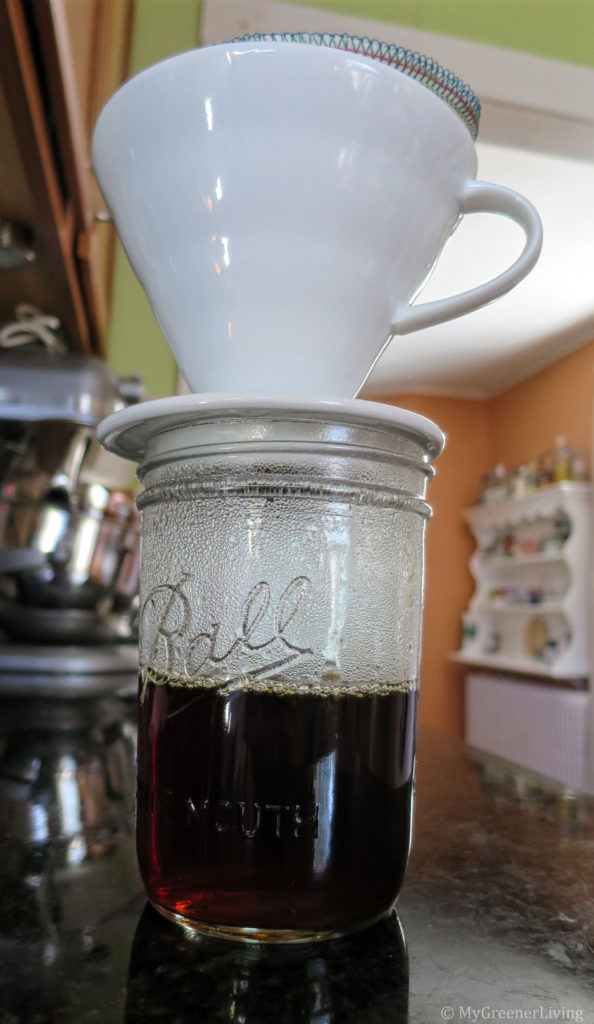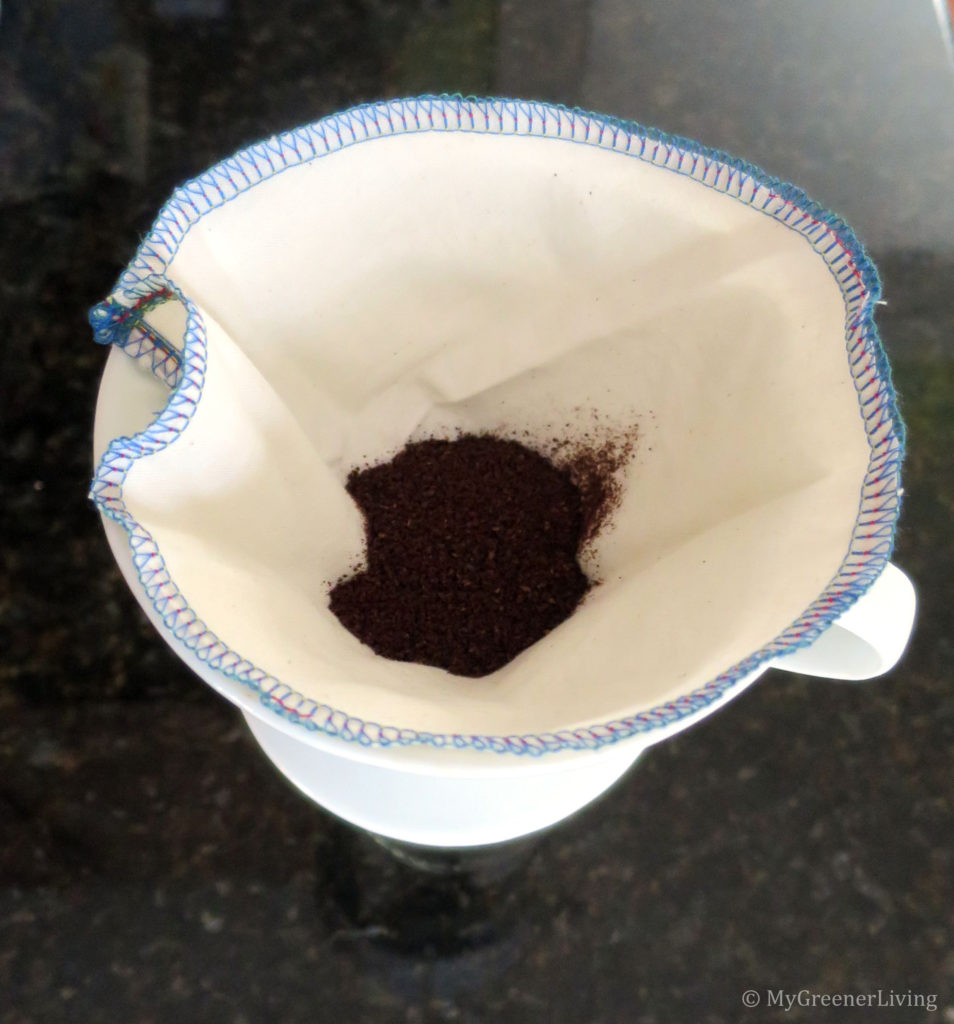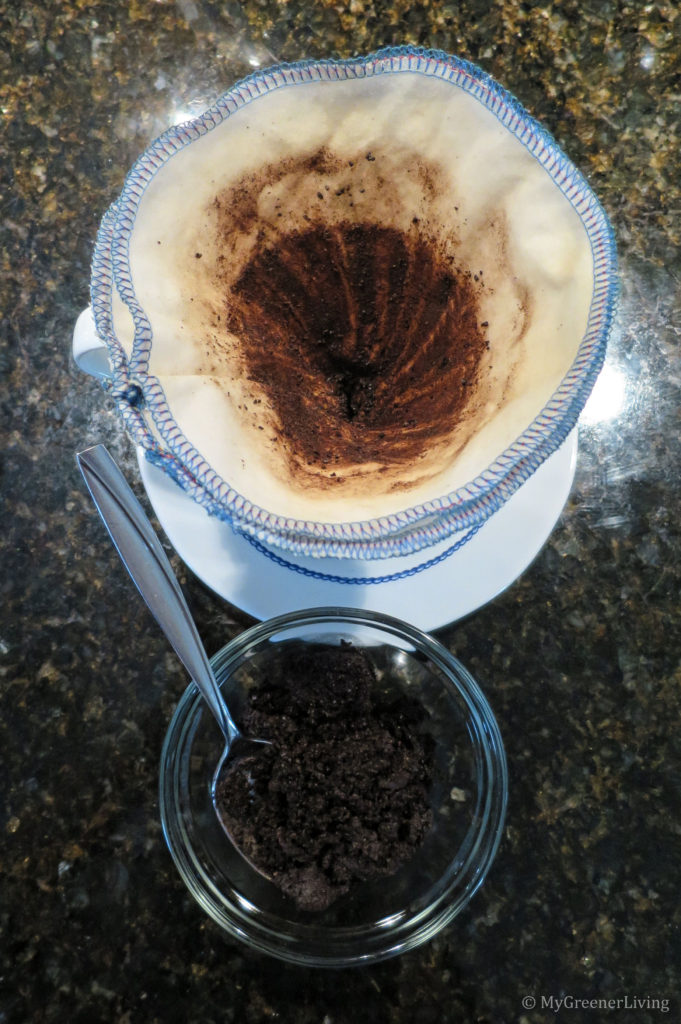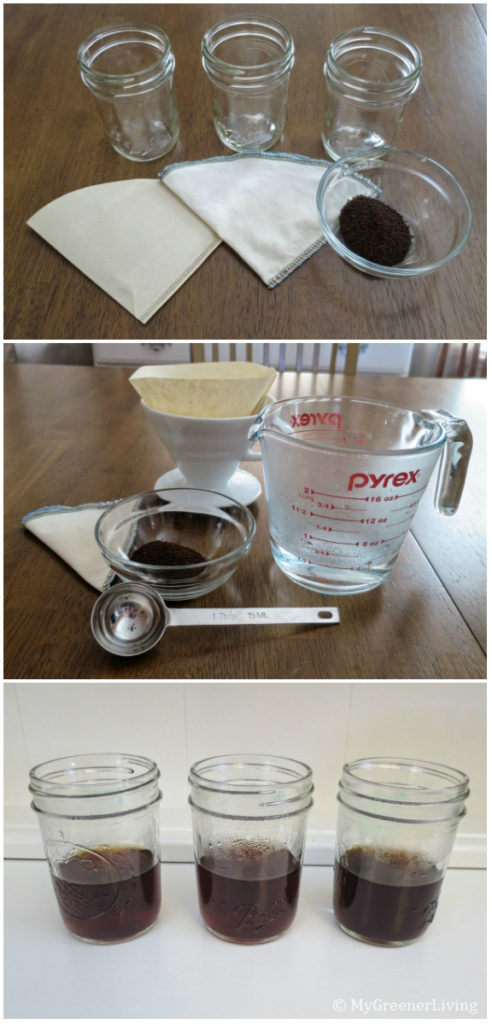I am always looking out for ways to reduce waste, anywhere and everywhere in my life. I recently found (made) a very easy and inexpensive way to eliminate disposable paper coffee filters by replacing them with reusable cotton coffee filters.

Disclaimer: This post contains affiliate links. See my Disclosure Policy for more information.
Brewing coffee
While not a coffee drinker myself, I have been making coffee for others for years. I have never liked large drip coffee machines or single pod machines due to the cost, space they take up on my counter, and all the plastic; french presses are a pain to clean. I have always preferred the simple ceramic pour-over drip coffee makers.

Zero waste coffee preparation
I looked into zero waste coffee preparation, and found something called a coffee sock. It’s a cotton coffee filter that is used in place of paper, or the reusable metal and plastic filter, and they are sold in different sizes and shapes to fit different coffee pots. When combined with my ceramic drip cone, I would have a totally zero waste brewing setup.
Since the filters that fit my coffee filter are extremely simple – basically a semi-circle folded in half and attached up the side – I decided to sew a couple myself with some scrap fabric. I had unbleached cotton. I opened one paper filter, traced it one the cotton, sewed around the cut edges with my serger sewing machine, and sewed up the side.

If I did not already have fabric scraps it probably would have been more frugal and cost effective to purchase the coffee sock. Alternately, I may have purchased a small amount of bamboo lyocell fabric if I could have found some since bamboo is a sustainable plant, growing quickly and requiring far less water than cotton to create fabric, and naturally does not require pesticides, or I may have looked for unbleached organic cotton (since bamboo is still tough to find locally).
How to use the reusable coffee filter
I use this cotton coffee filter just like the paper filters. Place the filter into the coffee maker cone, scoop the coffee into the filter, place coffee maker cone over coffee cup, pour water through.
How to clean the reusable coffee filter
To clean the cotton coffee filter, I scoop out the coffee grounds and toss them in my compost. I flip the filter inside out and rinse out the filter, preferably outside. I squeeze out extra water, then hang over my dish drying rack.
Every couple weeks, I boil the coffee filter for a couple minutes to remove the oils from the cotton filter. Then I rinse in cool water, squeeze out extra water, and allow to air dry.
The filters air dry really quickly – within a couple hours.

Taste tests
So, does coffee brewed through this cotton filter taste good? When I first brewed coffee through my cotton filter, we watched how quickly the water flowed through the filter. My taste tester thought the coffee tasted weak. But I wondered how much of that was influenced by watching the coffee brew, so I set up a blind taste test.
I brewed coffee 3 ways:
- through the paper filters I had been using for the past year
- through the cotton filter, brewed normally
- through the cotton filter, first soaking the coffee grounds in hot water for 4 minutes before pouring through the cotton filter
Each coffee was made with 1 Tablespoon ground coffee, and 4 fluid ounces hot water. My taste tester didn’t know which coffee was brewed in which manner. The comments received on each were:
- paper: coffee was weak
- cotton: overall good
- soaked, cotton: bitter, least coffee flavor
This experiment proved a few things. The main thing is that coffee brewed the “normal” way, with a cotton filter used in place of a paper filter, tastes best. The other thing it proved is that blind experiments are important – when we watched the coffee brewing the cotton filter made “weak” coffee, but with the blind experiment the cotton filter made the best tasting coffee.
Keep in mind that everyone’s tastes are different, and other people may prefer different brewing methods.

My household’s coffee brewing plans
Based on the results of the blind taste test, combined with the decrease in waste produced by using a reusable coffee filter (especially one made with scrap fabric!) I will be brewing coffee through a reusable cotton coffee filter for the foreseeable future.
This is definitely more of a tiny swap to help the environment than a big frugal cost savings measure, but I am a firm believer that every little bit counts. This is a simple substitution that I was able to make, that cost me nothing, saves me a couple dollars per year, and makes me feel good about doing another small thing to reduce waste.
Have you made any small frugal or small waste reduction efforts that made you feel good about making an “every little bit counts” change? Please share with us in the comments below!
